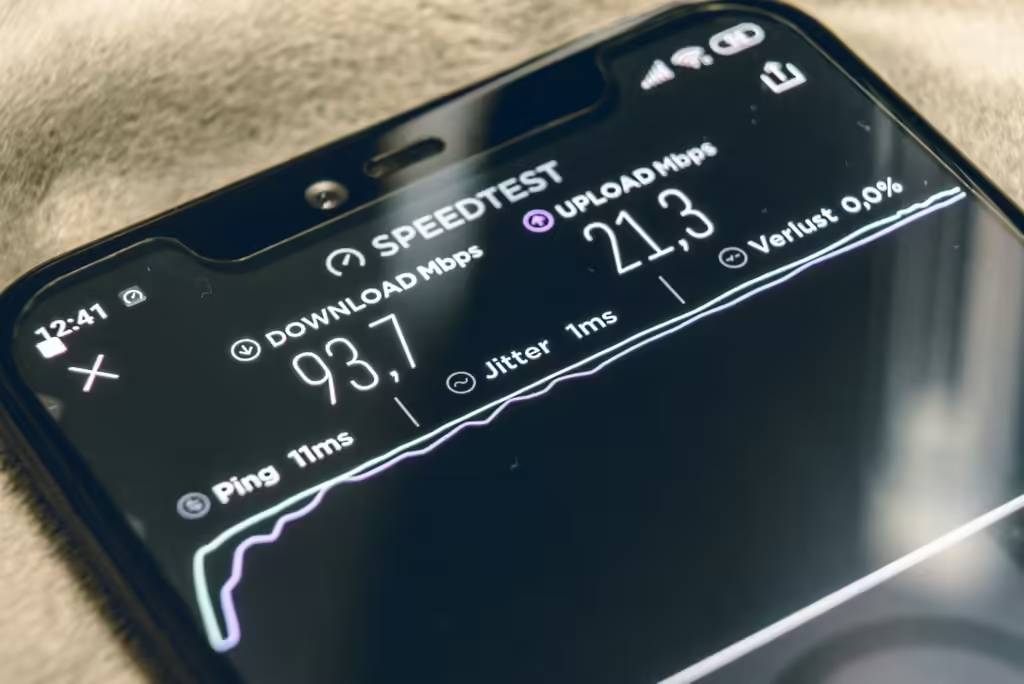
Understanding WiFi Jamming- What is WiFi Jamming and How Does it Work?
Wi-Fi jamming is a technique used to disrupt wireless communication signals. This method of attack has gained attention due to its potential impact on various devices and networks.
By deploying Wi-Fi jammers, individuals can disable surveillance cameras, business alarms and interfere with wireless networks.
These devices operate by emitting radio frequency signals that overwhelm or interfere with legitimate Wi-Fi transmissions. Notably, Wi-Fi jamming isn’t limited to Wi-Fi networks alone it can also affect Bluetooth, cellular and GPS signals, making it a versatile tool for both malicious and legitimate purposes.
In a business setting, WiFi jamming can disrupt day-to-day operations. It hinders productivity by causing delays in communication, affecting online transactions, disrupting internal systems, and hampering the use of cloud resources.
WiFi jamming can impact various types of businesses, but some are more vulnerable than others. For example.
Retail Stores: Retail businesses rely heavily on WiFi for point-of-sale systems, inventory management, and customer experience. Disruptions caused by WiFi jamming can lead to transaction failures, inventory inaccuracies, and frustrated customers.
Hotels and Restaurants: These establishments provide WiFi access to guests and patrons. Jamming can affect guest satisfaction, online reservations, and communication between staff members.
Offices and Co-Working Spaces: Businesses operating in shared office spaces or co-working environments depend on stable WiFi connections. Jamming can disrupt work, video conferences, and collaboration tools.
Warehouses and Logistics: WiFi is crucial for tracking inventory, managing shipments, and coordinating logistics. Jamming can disrupt these operations, leading to delays and inefficiencies.
Healthcare Facilities: Hospitals, clinics, and pharmacies rely on WiFi for patient records, communication, and medical equipment. WiFi interference can impact patient care and safety.
Manufacturing Plants: WiFi-enabled machinery and automation systems are common in manufacturing. Jamming can halt production lines and affect quality control.

Common Motivations Behind WiFi Jamming Attacks
WiFi jamming attacks pose significant risks to UK businesses, driven by various motivations.
Cybercrime Malicious actors engage in WiFi jamming to disrupt networks, compromise data, and gain unauthorized access. By causing signal interference, they can create chaos, steal sensitive information, or launch further cyberattacks.
Privacy Invasion WiFi jamming can violate privacy by disrupting communication channels. Attackers may target public spaces, offices, or even residential areas, compromising individuals’ privacy and security.
Network Sabotage Competitors or disgruntled insiders might jam WiFi signals to harm business operations. Disrupted connectivity affects productivity, communication, and customer experience.
Corporate Espionage Industrial espionage involves jamming WiFi to gain an advantage over rivals. By disrupting competitors’ networks, attackers can gather intelligence, disrupt supply chains, or compromise proprietary information.
Malicious Interference Some individuals engage in WiFi jamming for personal satisfaction or ideological reasons. They disrupt networks without a specific goal, causing inconvenience and financial losses.

Identifying Signs of WiFi Jamming on Your Network
Identifying signs of WiFi jamming on your network can be crucial to maintaining a reliable connection.
Signal Loss Detection – Common indicators include signal loss detection, where the WiFi signal unexpectedly weakens or disappears.
Network performance issues – Users may also experience network performance issues, with a noticeable slowdown in internet speeds and efficiency.
Connection drops – Frequent connection drops are another red flag, often occurring without any apparent reason.
Interference patterns – Observing interference patterns such as consistent disruptions at certain times can suggest the presence of jamming devices.
To diagnose these issues, WiFi analyser tools are invaluable, as they can scan your network for anomalies and help pinpoint the source of the interference, ensuring your network remains secure and functional.

Speedster IT’s Secure Wi-Fi, integrated within WatchGuard’s Unified Security Platform, offers a comprehensive suite of network security protocols designed to shield against WiFi jamming attempts.
Speedster Wifi & WatchGuards Unified Security Platform employs:
- Advanced encryption standards
- Real-time intrusion detection systems
- Adaptive signal filtering to mitigate the effects of jamming
- Continuous monitoring
- Dynamic frequency selection
- Proactive alerts
- Forensic reporting
Speedster IT and WatchGuard deliver an unparalleled level of protection, ensuring that your network’s security is never compromised. Our systems offer peace of mind through our advanced encryption, intrusion detection, and real-time monitoring, ensuring that a company’s digital infrastructure is resilient against evolving cyber threats.
Discover the possibilities for safeguarding your business with Speedster IT Secure Wi-Fi and WatchGuard’s Unified Security Platform. Connect with us to explore how our cutting edge solutions can secure your business wifi.

With over 15 years at Speedster IT, I’ve built a career around helping businesses navigate the evolving world of technology. I publish all the content for the IT Support London Blog and Cyber Security Blog, where I share practical insights on infrastructure upgrades, cybersecurity trends, and smart IT strategies for growing companies.
